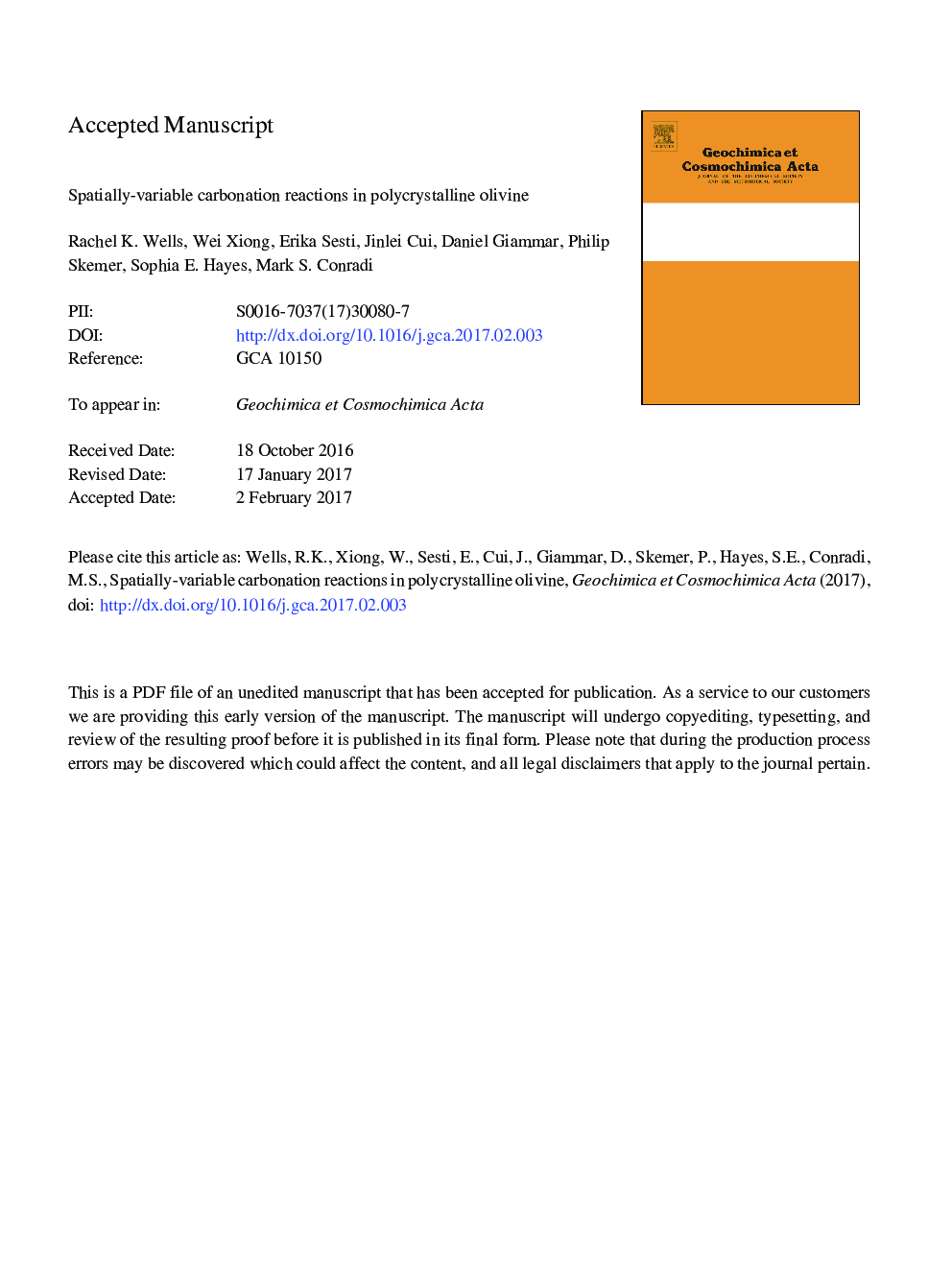| کد مقاله | کد نشریه | سال انتشار | مقاله انگلیسی | نسخه تمام متن |
|---|---|---|---|---|
| 5783549 | 1637953 | 2017 | 49 صفحه PDF | دانلود رایگان |
عنوان انگلیسی مقاله ISI
Spatially-variable carbonation reactions in polycrystalline olivine
ترجمه فارسی عنوان
واکنش های کربنیزاسیون متغیر در الینوین پلی کریستالی
دانلود مقاله + سفارش ترجمه
دانلود مقاله ISI انگلیسی
رایگان برای ایرانیان
کلمات کلیدی
تداخل کربن، اولیوین، بارش مگنزیت،
موضوعات مرتبط
مهندسی و علوم پایه
علوم زمین و سیارات
ژئوشیمی و پترولوژی
چکیده انگلیسی
Carbon dioxide (CO2) injection into olivine-rich mafic and ultramafic rocks is expected to result in the precipitation of divalent metal carbonate minerals, permanently storing the CO2 underground. Previous experiments that used unconsolidated forsterite (Mg2SiO4) particles in experimental investigations of reactions with water and carbon dioxide have been useful for determining the identity, rates of formation, and spatial location of carbonate mineral reaction products. However there remains a need for information regarding the influence of the internal pore structure and grain boundary surfaces on the extent and locations of these reactions in dense aggregates. We conducted several experiments at 100 °C and 100 bar CO2 using sintered San Carlos olivine (Fo90) and pure forsterite (Fo100) cylinders, and we documented the type and spatial distribution of the reaction products. Timing of carbonation was measured using in-situ 13C NMR spectroscopy without removing the sample from the reactor. Ex-situ solid-state NMR spectroscopy, Raman spectroscopy, and electron microscopy were used to examine reacted samples and precipitates. Within 15 days, magnesite is observed only on the surface of Fo90. After 53 and 102 days of reaction, magnesite and amorphous silica are observed as a crust around the entire Fo100 cylinder and as isolated layers within the sample. The spatial transition from an amorphous silica layer to the host Fo100 indicates that the development of amorphous silica did not impede further forsterite dissolution. While earlier studies documented localized reactions at the grain scale, the development of distinct zones of magnesite and amorphous silica suggest that divalent metal cations are mobile during carbonation of olivine. Grain boundaries, pore structure, and geochemical gradients strongly influence the locations of silicate mineral dissolution and carbonate mineral precipitation even in the absence of advective transport or confinement. The clear spatial distribution of precipitates observed in this study indicates that carbonation in heterogeneous reservoirs may be strongly affected by grain-scale microstructure.
ناشر
Database: Elsevier - ScienceDirect (ساینس دایرکت)
Journal: Geochimica et Cosmochimica Acta - Volume 204, 1 May 2017, Pages 252-266
Journal: Geochimica et Cosmochimica Acta - Volume 204, 1 May 2017, Pages 252-266
نویسندگان
Rachel K. Wells, Wei Xiong, Erika Sesti, Jinlei Cui, Daniel Giammar, Philip Skemer, Sophia E. Hayes, Mark S. Conradi,
